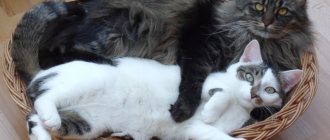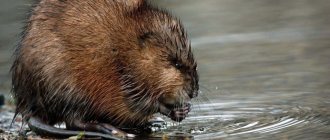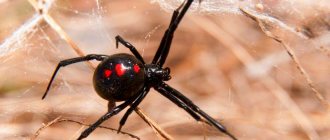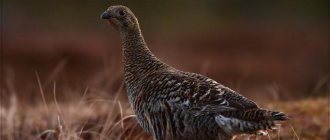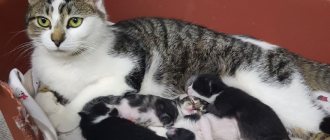- Wild animals
- >>
- Birds
The siskin can rightfully be called one of the most interesting, brave little birds. Siskins have firmly won the sympathy of people for their kind disposition, bright appearance, and quick and trouble-free taming. Siskin is a songbird. Siskin songs are very melodic, gentle, and evoke a lot of positive emotions. In addition, the bird itself has extraordinary learning abilities and interesting habits. In this publication you can learn more about the life of siskins.
Origin of the species and description
Photo: Chizh
Siskins are practically the most common songbird in the coniferous forests of Eurasia. They belong to the large family of finches, which belongs to the no less numerous order of passerines. The finch family includes a large number of songbirds. The average size of a siskin is only twelve centimeters, and its weight does not exceed sixteen grams.
Video: Chizh
Siskin is an excellent camouflage fish. Few people can notice it among the riot of greenery on the trees. However, having examined a small bird on a branch, it is difficult not to recognize it by its green and yellow coloring. The most characteristic feature of siskins is their melody. These animals love to trill to each other. In the trills, you can clearly hear various squeaks, creaks, buzzing sounds, and crackling sounds.
Interesting fact: Siskins often steal other people's sounds. In their repertoire you can hear the characteristic melodies of other birds. Most often they parody little and great tits. However, the melody necessarily contains its own words.
There are many varieties of siskins.
Among them are three of the most unusual and rare:
- fiery. It is also called red. He conquered people with his fiery plumage. This animal lives in South America. However, such a bright appearance caused a rapid decline in the population. Such birds are caught in large numbers by connoisseurs of exotics;
- American. These are migratory birds. They live in America, but spend the entire cold season in Mexico. The color of American siskins depends entirely on the time of year. In summer they are light yellow, in winter they are olive. These birds get along well with people, feeding on farmland;
- Magellanic siskin They have a very unusual color. The area of the head and throat is black in males, and olive in females. The wings are painted in a combination of green and yellow shades. This type is distinguished by a very complex melody. It consists of the song of a goldfinch and a canary. The Magellanic siskin does not adapt well to captivity.
How long do siskins live?
In captivity, a siskin can live quite a long time, but the number of years lived depends on the conditions of detention, nutrition and many other factors. If you take care of everything and follow the recommendations, then the bird living with you will celebrate its tenth or fifteenth birthday, and its pleasant melodic voice will delight you with its notes every year.
Communicate with the siskin, because they, like other domestic birds, can die from boredom. Although caring for a siskin is not a difficult task that even beginners can do, you must follow the recommendations of experts, otherwise the bird may get sick and die. By bringing a bird into your home, you take responsibility for its life and health, do not put the birds at risk, and if you are not ready to devote time to the siskin, simply postpone its purchase until later.
The friendliest bird from the finch family of the passerine order is the siskin. These birds are very easy to care for, so they are kept in captivity along with canaries; moreover, these birds often delight with their sonorous trills.
Tree sparrow and siskin feeding.
Appearance and features
Photo: Siskin bird
Siskins have much in common with representatives of their order, passeriformes. They are small in size. The body length does not exceed twelve centimeters, and the weight is no more than sixteen grams. Such dimensions are completely characteristic of ordinary sparrows. However, the siskin cannot be compared with a sparrow. The closest relatives of these birds are goldfinches, from which they often steal and perform songs.
To date, ornithologists have identified nineteen varieties of siskins. They all differ in habitat, behavior, and color. The color can be green-yellow, olive, red, pale gray. The most numerous species live closer to people, populating forests, parks, and gardens. Rare species prefer to live away from people.
Despite some differences, all types of siskins are characterized by certain external qualities:
- small but strong wings. Their span is twenty centimeters;
- Quite a long tail. It consists of regular and tail feathers. In most cases, the tail color is lemon yellow, and the tail feathers have a characteristic white edge;
- thin but tenacious legs. The toes are hooked and have short nails. Such paws allow the animal to hold firmly on tree branches;
- small, thin beak. It has a slightly convex shape, pointed at the end. This shape and structure of the beak are very unusual for representatives of the passerine order;
- small head, round body. In most varieties, the head is decorated with a special cap of black feathers. The birds' eyes are also coal-black, with yellow stripes visible above them. Externally, the stripes resemble eyebrows.
Description of the siskin
Siskin is a representative of the passerine order. This bird is small in size. On average it reaches 12 cm in length, weighing from 10 to 18 g.
Appearance
The siskin has a small head with coal-black eyes and a rounded body, two to three times the size of the head itself, a small triangular gray beak and thin brown legs with hooked fingers and short claws to make it convenient to cling to branches.
The plumage color of the siskin is greenish-yellow, mixed with black, dark gray and olive. The female siskin's abdomen is covered with dark stripes or spots. The male has a more variegated and brighter color than the female, the feathers in the tail and wings, on which stripes of white, black and yellow are visible, are longer, and on the head there is a spot of dark gray or black feathers, the so-called “cap”, and a small black spot or “penny” may appear on the chin.
Lifestyle and behavior
Siskins can appear very restless and even chaotic in their behavior due to their activity. But it is not so. Birds of this species are incredibly united, have a hierarchical system in flocks, and even belong to a species that involves “sharing” food, that is, regurgitating their food to another member of the flock from the dominant group. Siskins always live in pairs, especially in summer during nesting. The male and female equally take part in the construction of the family nest, preferring to build it on the top of a tree, most often a coniferous one.
This is interesting!
They generally try to stay higher off the ground. Closer to autumn, siskins form small flocks, and in winter their migration begins. Usually, if a siskin settles in a warm place, there is no need to change the place.
Therefore, flocks either remain where they settled, or fly short distances, closer to deciduous or mixed forests. And if an ice-free body of water is encountered along the way, the flock will remain there for the winter. Sometimes it happens that part of one large flock flies over, while the other remains in the same place. Flocks always try to stay together, staying nearby. Up to six pairs with nests can be located on two trees standing nearby.
The sonorous singing of siskins, creating a friendly and romantic atmosphere, can always be clearly recognized. In addition to its natural “style” of singing, the siskin also has the ability to well parody its neighbors - birds of other species, especially tits. It is precisely for their beautiful singing and friendly peaceful nature that siskins are so popular as pets.
How long do siskins live?
From 1955 to 1995, ornithologists banded about 15 thousand individuals in the Leningrad region. Upon repeated captures, it turned out that only two of all those ringed lived to 3.5 years, one to 6 years, and one more lived to 8 years. In 1985, a 25-year-old siskin was recorded, but this, of course, is an exceptional case.
In nature, due to the possible probability of attack or destruction of the nest, as well as constant migration, the average life expectancy of siskins is only 1.5 years, that is, the population is completely renewed within 2 years. When in captivity, a siskin will live much longer, up to 9-10 years.
Where does the siskin live?
Photo: Siskin in the forest
The natural habitat of siskins is huge. It includes almost all of Europe and Asia. A large number of species of siskins are found in Crimea, Siberia, and Transbaikalia. You can also find such a bird in China, Ukraine, Africa, and Iraq. Some species live in South and North America. As you can see, such animals are found almost all over the globe. The only exception is Antarctica.
Siskins are very mobile, active birds. They often change locations and are classified as migratory birds. When it gets colder, siskins gather in flocks and go to warmer countries and cities. These animals are quite hardy, despite their modest size. They easily cover long distances, although they often take rest along the way.
Interesting fact: In cold, frosty seasons, songbirds change not only their habitat. With climate change and migration, some species also change the color of their plumage. Instead of lemon yellow feathers, slightly greenish feathers appear.
Siskins are quite demanding of their habitat. They prefer coniferous forests. Only sometimes they settle in mixed forests. Trees in forests should be tall; birches and alders are preferred. In such an environment, little birds feel absolutely safe. Some species of siskins live in high mountain areas.
Interesting fact: Today, a huge number of siskins live in captivity. These songbirds are easily domesticated and are sold in pet stores around the world. They get used to people quickly, and over time they become very attached to their owner, like ordinary cats or dogs.
Nutrition and behavior
Siskins can eat both plant and animal foods. Thus, siskins’ diet includes small insects, seeds of coniferous and deciduous trees, especially alder and birch. In order to get food for themselves, siskins can cling to a tree branch and hang upside down. Favorite delicacies are also dandelion seeds and pine cone nuts.
Siskins move along the ground by jumping, but they rarely do this; most often they hide in the crowns of trees or flutter high in the sky. They do not live alone; after the end of the mating season, they gather in flocks.
The female siskin forages for food in winter. Siskins on a tree in March.
What does the siskin eat?
Photo: Siskin on a tree
The basis of the diet of siskins is various seeds of trees and grasses. These birds are very interesting in getting their food. They take various poses, sometimes hanging upside down on thin branches. During the day, these animals explore a huge number of trees and plants in order to get seeds for themselves. Siskins' favorite delicacy is coniferous tree seeds. They eat them in huge quantities, especially in the spring, when the cones open on their own. Then the birds don’t have to put in a lot of effort to get the seeds.
Siskins will never refuse dandelion seeds. This is their favorite plant. In fields with dandelions you can often spot whole flocks of birds. However, siskins do not eat dandelion seeds so often. These animals prefer to stay on the treetops for their own safety. Only occasionally do they descend to the ground. Having descended, the siskin can catch several insects. Small insects are preferred. Most often, birds catch them not even for themselves, but for their own chicks.
Interesting fact: In winter, siskins leave cold countries not so much because of low temperatures, but because of lack of food. For this reason, there are exceptions - some siskins lead a sedentary lifestyle. This is possible if there are nearby lands with a large amount of suitable food and non-freezing reservoirs.
The nutrition of siskins kept at home should be exemplary. The health of the animal and its life expectancy will depend on this.
The diet of domestic siskins should include the following products:
- seeds: plantain, birch, dandelion, flax, sunflower, hemp, etc.;
- rapeseed, millet, oatmeal;
- fruits and vegetables: apples, cabbage, carrots.
What does a siskin look like?
Even in the photo it is clear that the siskin does not have such catchy plumage as, for example, its relative the goldfinch, but this does not diminish its attractiveness. The size of the siskin is similar to a sparrow - the body length is about 10-12 cm, and the weight is 12-16 grams.
Its color varies depending on the time of year, so in the spring their outfits are especially colorful and which makes it very easy to distinguish a male from a female. The plumage of adult siskins is yellow-green on top, the feathers have longitudinal lines, and the feathers of the long tail are bright yellow. The bird has a cap of black feathers on its head, and small yellow “eyebrows” extend over its eyes. There are two yellow transverse stripes on the dark wings. The black tail feathers have a beautiful yellow-green transition, and they end in a white border.
The plumage of the female siskin is not so colorful, its color is much more restrained, there is no black cap on the head, the back is gray-green, the belly is whitish-yellow with black longitudinal spots. Immature males are similar in color to adult females.
The beak of the siskin is quite unusual - it is thin and short, well pointed, slightly convex at the top.
Male siskin in winter. Male siskin: full-length portrait. Photo of a small siskin bird. Siskins and birch seeds. Siskin feeds on dry grass. Siskin on a birch branch.
Features of character and lifestyle
Photo: Chizh in winter
The life of siskins is in constant motion. In the warm season they nest. For this, birds choose tall trees; most often, nests are found at the very tops of coniferous trees. To build a nest, siskins unite in pairs. The female and male work together to build the nest. The male usually finds and brings suitable material, and the female carefully builds a “house” for future offspring.
The nest is built from inconspicuous material. Birds often use lichens and moss for this purpose. Such building material merges with the branches of a coniferous tree, so it is almost impossible to immediately detect a siskin nest. The birds lay blades of grass inside the nest. Inside the nest it is always cozy and warm. Plus, green grass also serves as a certain camouflage.
Foresight is the main quality of siskins. Little birds make their “houses” inconspicuous for a reason. With the help of camouflage, they protect eggs and hatched chicks from potential danger. Nests are difficult to locate. In addition to building a nest, during the day the birds search for food. They quickly move from one tree to another, where they obtain seeds. Birds practically do not walk on the ground. They only occasionally descend to the ground to collect a blade of grass, find plant seeds, or catch insects for their young.
Siskins have a wonderful character. These are kind, calm, cheerful, perky animals. They spend the whole day flying and singing beautifully. Siskins are easily tamed and become obedient pets. Such birds quickly become attached to their owners and delight them with melodic and soothing singing every day.
Social structure and reproduction
Photo: Siskin bird
The mating season for siskins falls just during the nesting period. In spring, these little birds are looking for a suitable mate. At this time, siskins are especially vocal and often sing. Males trill to attract females. The females answer them, but a little more quietly. Then, having split into pairs, the birds make mating flights and mate. It is very pleasant to watch the flights of siskins. The female dances beautifully in the air, and the male hovers around her.
The female lays eggs in their common nest, which they built together in advance. At one time, a female siskin can lay about six eggs. The eggs of these animals are distinguished by their unusual shape and bright colors. The shape of the eggs resembles a pear in appearance, and their color is bluish-green. Also on the eggs there are various lines and spots of a dark shade. Siskins usually breed once a year, but there are exceptions. Females of some species lay eggs twice a year.
Over the next two weeks, the female incubates the eggs. At this time, the male is assigned the responsibility of searching for food. He feeds the female and sometimes replaces her. When the chicks hatch from the eggs, the male and the female work together to get food. Animals feed their offspring with butterfly caterpillars and small insects. This type of nutrition helps babies gain strength, gain weight and grow in a short period of time.
The development of the chicks takes place under the strict supervision of their parents. Usually it takes no more than two weeks. Two weeks after birth, the chicks are ready for independent life. They leave their parents' nest and begin to move on with their own lives. The overall life expectancy of siskins in the wild is very short. On average, these small birds live about two years. In captivity they can live longer - about eight years.
Reproduction and offspring
In summer and winter, the siskin looks for a mate to breed its offspring.
. During the mating season, which is usually followed by joint construction of a nest, the male attracts attention with a song or “trill” and the so-called dance around the female (the male raises his tail and spins). Moreover, the song of the siskin has a certain structure, consisting of several parts, various chirps, trills, noises and knocks.
The female, in turn, joins the flight, and the two of them circle for a long time, consolidating their union. The bird's nest is made in the form of a bowl from roots and twigs; the bottom or tray is lined inside, insulated with down and moss. Sometimes the siskin puts small pebbles in the nest. In a German legend there is a story that a siskin guards a magic stone in its nest. After this comes the stage of hatching the eggs.
This is interesting!
Siskins lay eggs up to twice a year, in early April - May and in June - early July. Usually there are no more than 5-6 of them in a clutch. They themselves are unusually pear-shaped. Moreover, eggs in one clutch may differ in size and color. Color can range from white or pale blue to pale green with dark spots and stripes.
The incubation period lasts about two weeks, and while the female incubates the eggs, the male protects the nest in every possible way and brings food. After hatching, the chicks remain under the close supervision of their parents for another two weeks, who bring them small insects, caterpillars, and beetles, rich in protein, which is so necessary for the growth of the chick.
It occurs that the female begins to build a new nest nearby to begin a new nesting cycle, and in the meantime the male feeds the first brood. Then the children leave the parent’s nest when the body is already quite full of plumage, but the female and male continue to help the young to get food, which often simply “chases” them, trying to learn everything that is necessary for survival.
Thanks to their external characteristics, soft, calm character and unpretentious maintenance, siskins have long won the love and recognition of lovers of domestic birds. But just the desire to make friends with a bird is not enough; you need to know how to properly care for it, so that at home it feels the same as in nature.
The siskin is an unpretentious bird, the maintenance and care of which will not require much time and effort from you. To provide your pet with comfortable conditions, let's learn more about his habits and preferences.
Have you decided to get a siskin? This is a good choice, but the conditions for its existence must be taken care of in advance.
At first glance, this bird is inconspicuous, quiet and timid. But, having gotten to know her better, you can find out that the siskin has many advantages: a light, friendly disposition, beautiful plumage, indiscriminate eating and quick adaptation to new conditions.
In nature, siskins demonstrate the ability to camouflage perfectly. They make their nests in old spruce forests, in the treetops, so it is almost impossible to find a nest in lush branches. You can talk for hours about how smart the siskin is, because many people believe that he is smarter than the parrot himself. He has a good memory, he quickly becomes attached to his owner and distinguishes where he is and where the rest of the household is. With the appearance of the owner, the bird noticeably perks up, it begins to sing, becomes frisky and playful.
Prepare a separate cage for the bird, its approximate dimensions are 40x40x30 cm. But if this is not possible, he can live in an enclosure, but only if there is no conflicting individual among his relatives. Let the neighbors be not only friendly, but also small-sized, because the siskin is small and easy to offend. Siskins get along well in the same cage, for example, with goldfinches or jays.
Food is poured into a separate feeder for the siskin, and river sand or mineral fertilizer - chalk, eggshells, charcoal - into a separate one. It’s not difficult to make perches from twigs yourself; use twigs with uneven surfaces as building material. Jumping on such perches is an excellent prevention of diseases in the limbs of birds.
The siskin needs not one drinker, but two. He will drink from one, and the other, a clean bird, will be used for water procedures. If the siskin takes care of itself, and this is exactly what it will do, you will be able to admire its bright, beautiful feathers for many years.
The siskin, like any domestic bird, needs to stretch its wings, so let it walk around the room, but before that, close the doors and windows. Don’t close the door to the cage, who knows how soon the bird will want to go back. If she cannot do this, she will panic, and this is dangerous to her health.
Feeders and drinking bowls, as well as the bathing container, must be clean; any remaining food must be removed in a timely manner, especially if it is, for example, a half-eaten boiled egg. Dirty water and spoiled food can cause health problems.
As soon as the adaptation period ends, the owners of siskins begin training with them. After several lessons, you will understand that after cleaning, the cage can be left open, the bird will not fly away, and it will not damage the furniture. You can teach your siskin to finish his walk on command and return home. Thanks to its sharp mind and excellent memory, lessons with a siskin are a pleasure for its owner, because the bird is a capable student. These are the unique abilities nature has awarded these miniature creatures.
The siskin is not a conflicting bird; it finds a common language with its neighbors in the aviary or cage. But, if problematic situations arise, you must understand that, like animals, birds have their own individual characteristics - habits, inclinations, preferences. And, sometimes, even such a friendly bird as a siskin can demonstrate rage and indignation.
You need to take care of what your pet will eat long before purchasing it. After all, for him, like for any other living creature, the regular intake of vitamins, minerals and trace elements into the body is very important. You need to know which foods are good for the siskin, and which ones are best not given. The key to bird health is a varied diet. If the bird feeds on a mixture of different seeds, then the siskin will not only give you its songs all year round, but will also delight you with its offspring.
For most poultry, hemp is harmful, but the siskin’s body hardly reacts to it. Poppy, rapeseed, flax, rapeseed, birch and alder seeds - the siskin eats all this with pleasure. In addition to seeds, the diet should include greens. In summer, give him dandelion leaves or lettuce, in winter - birch or willow twigs, sprouted cereals, and white cabbage. Let's peel some pieces of apple, carrot or pumpkin. It is better not to give pears, as problems with the functioning of the gastrointestinal tract may begin. Boil and chop an egg, boil rice - such soft food should also be present in the diet, especially during the molting period. The siskin is a granivorous bird, but ant eggs and insect larvae are present in the daily diet of free-living birds.
Spruce and pine seeds are a delicacy for siskins, but in winter you can’t get the seeds of blossoming cones, give them regular spruce needles, the siskin will get pleasure and vitamins.
If you don’t have the time and opportunity to make mixtures yourself, or you don’t want to rack your brains over compiling his daily menu, buy mixed food in the store. But you can’t save on the bird’s health; buy food only from trusted manufacturers.
Natural enemies of siskins
Photo: Chizh in the city
Siskins are funny, fast, beautiful birds. These animals spend almost the entire day in the air, flying high above the treetops. Siskin is a cautious, prudent bird. She does not descend to the ground unnecessarily, so she rarely becomes a victim of predatory animals. Only occasionally can a siskin become food for a marten, ferret or weasel. Most often, animals manage to catch a siskin while it is collecting insects for its offspring or grass for building a nest.
The most dangerous natural enemies for siskins are large and medium-sized birds of prey. They deftly hunt small birds, sometimes destroying their nests. Golden eagles, owls, kites, eagle owls, eagles and many other predators are not averse to dining on siskins. Squirrels also destroy nests. However, this happens quite rarely. Siskins perfectly camouflage their nests and place them almost at the very tops of trees.
Fleas can cause harm to these birds. If fleas infest a nest, they can lead to the death of siskins and their offspring. Some species of siskins are caused great harm by people themselves. Particularly rare species of songbirds are especially popular among exotic lovers. People hunt them for the purpose of keeping them in captivity. This uncontrolled fishing has led to a significant decline in the numbers of some species.
